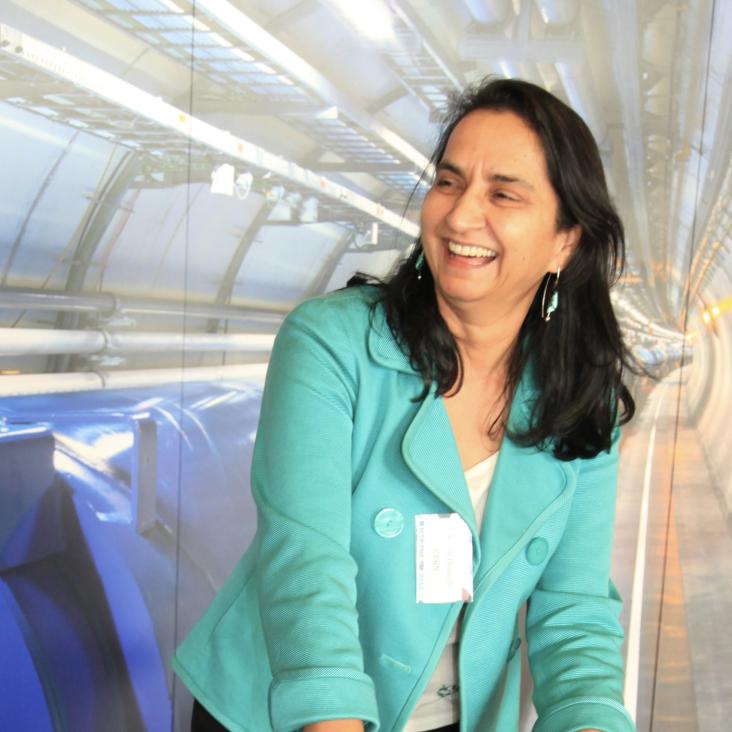Professor Manjit Dosanjh joined the Department of Physics at the University of Oxford in 2019 as visiting professor. Her pioneering work to apply physics to the medical domain is changing the field in cancer treatment and she is passionate about the power of STEM to change people’s lives.
According to Manjit Dosanjh, visiting professor at the Department of Physics, University of Oxford, collaboration is the invisible force that makes the impossible possible. And she should know having stretched the boundaries of what is indeed possible. Professor Dosanjh might well be called a multi-hyphenate in today’s world. As well as taking up a visiting professorship in the Department of Physics in 2019, she was, until recently, Senior Adviser for Medical Applications at CERN where she worked for 21 years and where she continues to collaborate. She is a long-term member of the NGO Committee on the Status of Women, Geneva and served as the UN representative in Geneva for the NGO Graduate Women International for 15 years. Incarnating the power of collaboration, Manjit is a self-titled ‘bridge builder’ – summed up if nothing else by that fact that as a biochemist, she worked in the world’s largest particle physics experiment and today holds a position in a physics department.
Collaboration and bridging underpin her work. She is a leading figure in the medical applications of physics in the field of cancer and has spent much of her career studying mechanisms of cancer resulting from environmental exposure including radiation damage. She was instrumental in the application of technologies developed at CERN in the medical field, in particular imaging for disease detection, accelerators for use in nuclear medicine and cancer therapy as well as the use of computing and information communication technologies for big biomedical data and personalised medicine. One of her major successes was the promotion and implementation of the Proton-Ion Medical Machine Study (PIMMS), carried out at CERN, by establishing a multidisciplinary European network, which catalysed the construction of state-of-the-art cancer centres where hadrons are currently being used in cancer treatment.
EDUCATION
Ph.D. in Biochemical Engineering, University of Birmingham, England, 1985
M.Sc. in Biochemical Engineering, University of Birmingham, England, 1982
Post Graduate Certificate in Education, University of Leeds, England, 1977
B.Sc. (Hons) in Biochemistry/Chemistry, University of Leeds, England, 1976
CURRENT POSITION
Visiting Professor, University of Oxford, England, 2019 - Present
- Engaging in groundbreaking research and teaching, contributing to the advancement of the university's academic excellence.
Former Senior Advisor for Medical Applications at CERN 1999-2020, retired CERN Scientist 2020 - Present
- Spearheading innovations in medical applications of particle physics, enhancing global healthcare technologies.
Board of Directors and Project Leader for STELLA (Smart Technologies to Extend Lives with Linear Accelerators), International Cancer Expert Corps (ICEC), 2019 - Present
- Leading international efforts to develop advanced cancer treatment solutions, demonstrating a commitment to global health and wellness.
Coordinator, ENLIGHT (European Network for Light Ion Hadron Therapy), 2006 - Present
- Overseeing a major collaborative network, fostering advancements in cancer therapy through the use of light ion hadron technology.


